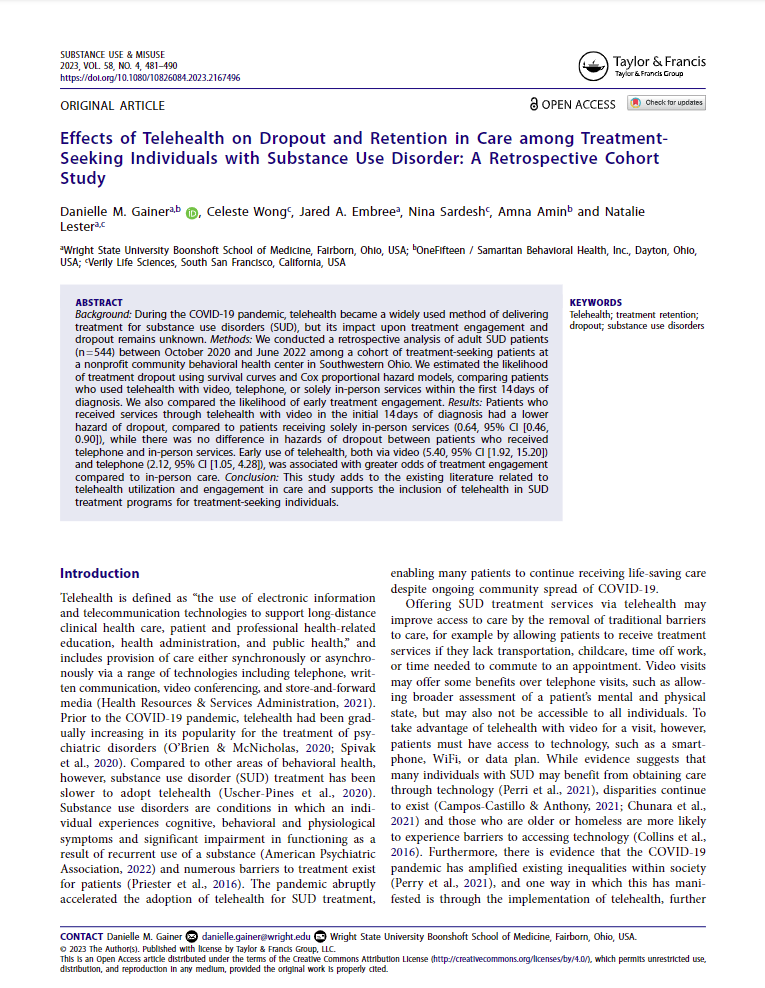Headline
Including telehealth as an option for early substance use treatment may improve engagement in care.
Context
The COVID-19 pandemic accelerated adoption of telehealth for substance use disorder (SUD) treatment. Given that higher levels of engagement in SUD treatment can lead to better health outcomes, this study compared how early participation in SUD treatment through telehealth with video, telephone, and solely in-person services affected rates of treatment engagement and dropout from treatment. In this study, adult patients and their respective providers chose whether to use telehealth with video, telephone, or in-person services during the first two weeks after diagnosis.
Findings
Patients who received early treatment from telehealth (using video or phone) were more engaged in treatment and were less likely to drop out of treatment as compared to those who received in-person services. Most patients who received telehealth services at the beginning of treatment went on to receive care using a combination of modalities, including in-person care.
Takeaways
Offering telehealth-based services at the beginning of treatment can support patients who can access telehealth services to engage quickly with treatment. SUD treatment providers can incorporate these findings as they explore flexible care models across multiple modalities to meet patient needs. Policymakers can use these findings to update relevant SUD telehealth policies (and not revert to pre-pandemic telehealth rules) that may create barriers to accessing treatment.

